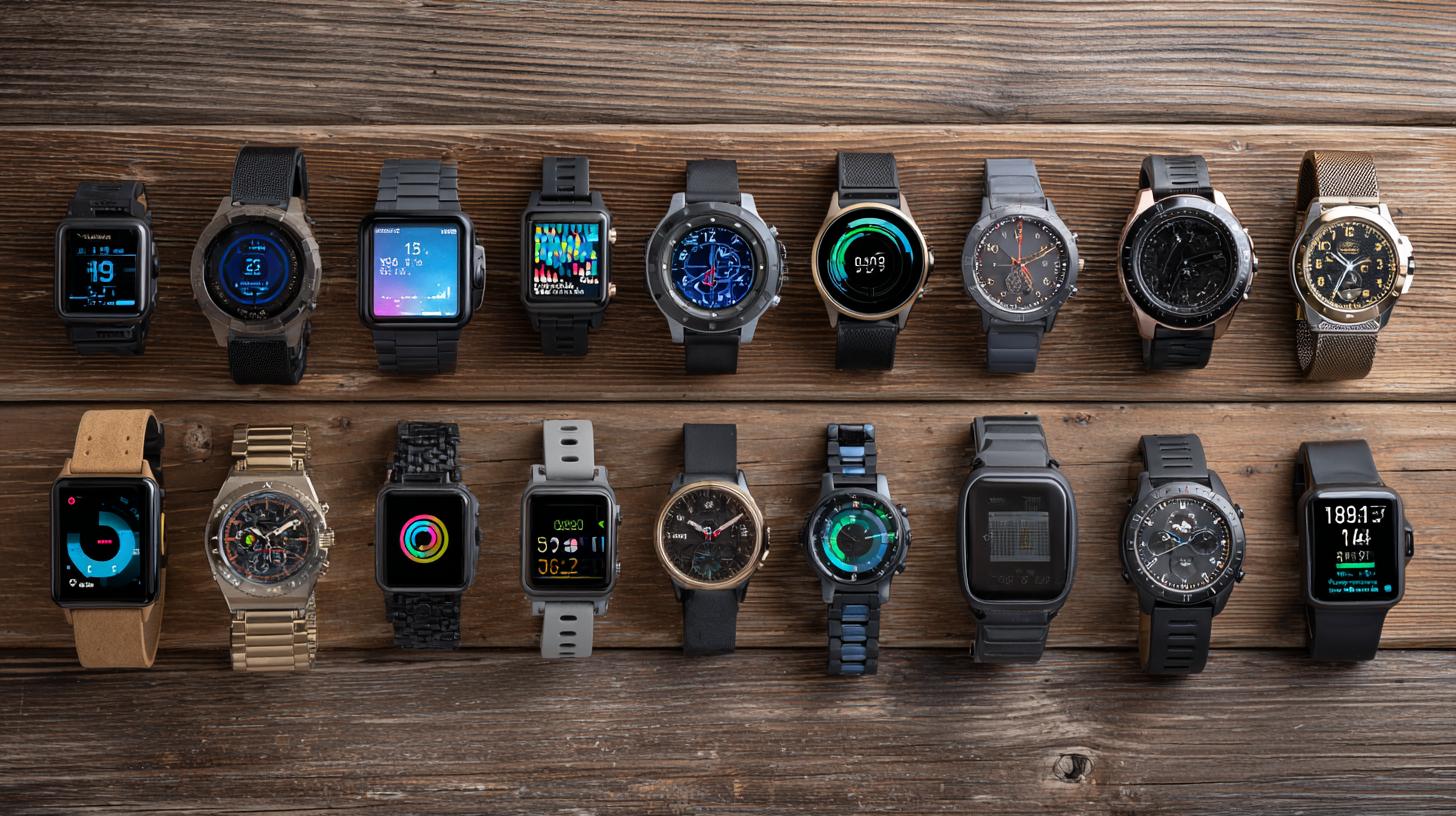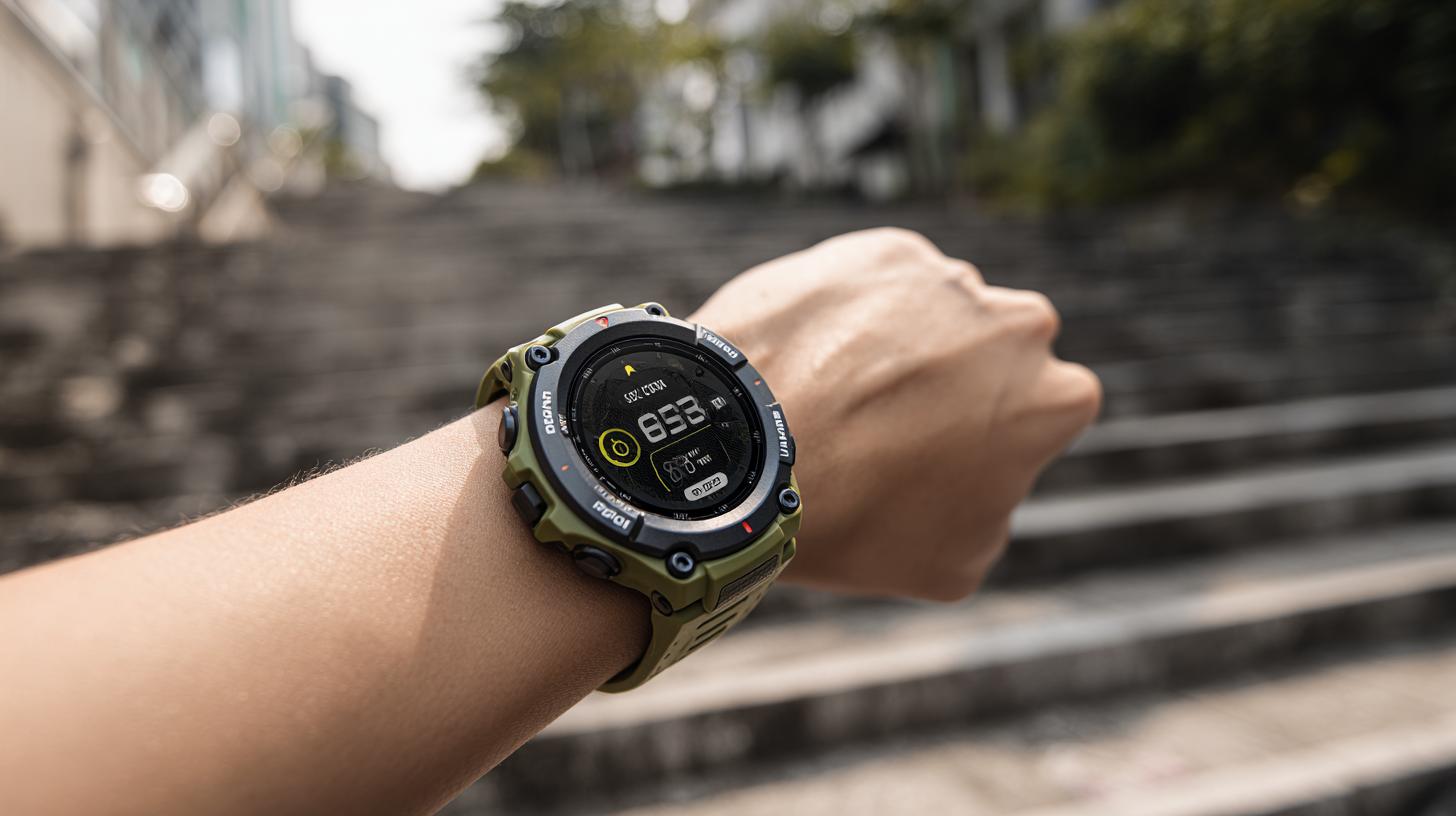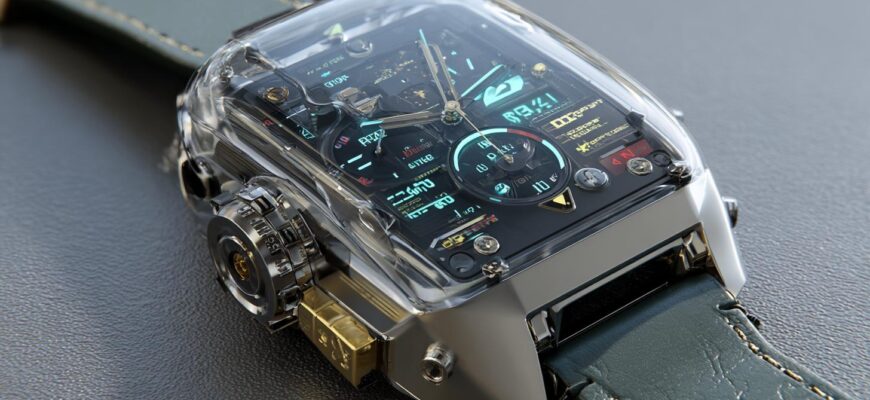Smartwatches in 2025 are no longer one-size-fits-all wrist gadgets; they’re focused tools, fashion statements, and health partners. Whether you want clinical-grade health tracking, multi-day battery life for adventure, or a timepiece that complements a suit, there’s a compelling choice this year.
In this guide I’ll walk through the categories that matter — health, sports, and style — highlight standout options from major makers and specialty brands, and give practical buying advice so your next watch truly fits how you live. Read on for clear picks, comparisons, and tips to match features to goals.
- How the smartwatch landscape changed by 2025
- What to look for: health features that matter
- Sports and performance: what serious athletes should demand
- Design and style: how a watch complements your wardrobe
- Operating systems and platform compatibility
- Battery life: real expectations for daily use
- Safety and emergency features
- Top picks by category
- Best overall: balanced features and ecosystem
- Best for health tracking
- Best for endurance and multisport athletes
- Best for style and luxury
- Best value and budget picks
- Comparison table: pick at a glance
- How I test and choose watches — a personal note
- Data privacy and security
- Accessories that extend usefulness
- Software updates and longevity
- Price vs. value: how to avoid buyer’s regret
- Care and maintenance tips
- Common pitfalls and how to avoid them
- Future trends to watch
- Checklist before you buy
- Real-world scenario: choosing for a busy parent
- Real-world scenario: choosing for endurance adventuring
- How to evaluate clinical claims and certifications
- Where to buy and warranty considerations
- Wrapping up your decision
How the smartwatch landscape changed by 2025
The last few years pushed smartwatches beyond notification hubs into sensors-driven devices that can influence medical conversations and athletic performance. Manufacturers have doubled down on accuracy for heart rate, oxygen saturation, sleep staging, and movement analytics while improving battery life and durable designs.
Software matured too: watch operating systems now routinely support third-party health apps, offline music, and on-device workout coaching without needing a phone nearby. That shift means buyers can prioritize the ecosystem and sensor fidelity rather than just aesthetics.
Meanwhile, style has become a differentiator. Brands once known for rugged hardware now offer leather and metal finishes, and luxury watchmakers collaborate with tech firms to produce hybrid models that blend classic watchmaking with smart features.
What to look for: health features that matter
Accurate heart-rate monitoring is baseline, but in 2025 we expect continuous optical tracking with fewer dropouts during activity and better algorithms to handle motion. For general health, consistency and clinical validation matter more than flashy charts.
Blood oxygen sensing, once a pandemic-era headline, is now a standard tool for sleep and altitude insights. Look for watches that offer automatic SpO2 measurements overnight and sensible alerts rather than alarming you for every transient dip.
ECG functionality has graduated to useful screeners for atrial fibrillation in several jurisdictions. If you have cardiac concerns, prioritize devices with validated ECG apps and clear export options to share readings with clinicians.
Respiratory rate, stress metrics, and more advanced analytics like heart-rate variability are growing in importance. Devices that present trends with context — for example, daily readiness scores tied to sleep and training — will give you actionable guidance instead of raw numbers.
Sports and performance: what serious athletes should demand
Athletes want accurate GPS, durable construction, rich metrics, and reliable battery life for long outings. Multisport athletes should choose devices with robust mode-switching, automatic lap detection, and advanced cadence/stride analytics.
For runners, advanced stride metrics and on-device pace coaching reduce reliance on a phone while training. Cyclists benefit when watches pair cleanly with power meters and cadence sensors, offering structured workouts and FTP-based training plans.
Open-water swimmers and triathletes need water resistance, swim stroke detection, and reliable GPS re-acquisition after submersion. A watch that handles transitions smoothly and stores a full multisport session is invaluable in race conditions.
Coaching platforms and third-party app ecosystems matter because they determine how usable your training data becomes. If you rely on a specific coach or app, pick the watch that integrates most cleanly with that workflow.
Design and style: how a watch complements your wardrobe
Style isn’t secondary; it’s part of why people wear watches every day. In 2025, many brands offer modularity: swap bands quickly, change watch faces, and pick case finishes that fit both gym and boardroom.
Thin, refined designs appeal to those who want a watch that doesn’t look like athletic equipment. Luxury hybrids now include mechanical hands with a discreet display, satisfying traditionalists who want some smart functions without an overt screen.
Material choices — titanium, stainless steel, ceramic, and even carbon composites — let you balance weight, durability, and visual impact. Comfortable strap options, from silicone for workouts to leather for evening wear, round out the practical style choices.
Operating systems and platform compatibility
The operating system determines the experience, from app availability to message handling and payment support. Apple Watch continues to be the smoothest option for iPhone users because of deep integration with iOS services.
For Android users, several mature options compete: Watches using Wear OS provide a broad app ecosystem and Google services, while specialized platforms from Garmin, Polar, and proprietary Samsung OSes emphasize fitness features and battery life.
Ecosystem lock-in is real. If you’re invested in a platform already — iCloud, Google Fit, Strava, or a premium coaching service — pick a watch with strong native integration to avoid constant data transfers and workarounds.
Battery life: real expectations for daily use
Battery claims are often optimistic, but 2025 watches offer clearer modes: typical daily smart usage, extended multi-day GPS mode, and a low-power time-only fallback. Choose based on how you’ll use the device in real life.
If you train frequently outdoors or take multi-day hikes, prioritize models with multi-day GPS endurance or the ability to switch to ultra-endurance modes without losing essential metrics. For desk-focused users, a daily charger is acceptable if it offers richer features.
Safety and emergency features
Fall detection, crash detection, and emergency SOS are now commonplace and can be lifesaving. Look for devices that can auto-dial emergency contacts with location sharing and that work internationally if you travel often.
Some watches also include manual check-in or buddy-tracking features for trail runs or solo rides. These convenience tools matter when you push limits in remote places and need a reliable way to get help.
Top picks by category
Below are my curated suggestions for different priorities: best overall, best for health monitoring, best for endurance athletes, best for style, and best budget-friendly options. These picks reflect broader trends and usability rather than focusing only on specs sheets.
Best overall: balanced features and ecosystem
The best overall watch is the one that blends sensors, software, and ecosystem neatly. Look for a device that offers reliable health tracking, seamless phone integration, and a wide range of apps and services.
For many buyers, that means choosing a model from a major platform vendor that supports everything from contactless payments to robust notification controls while still offering advanced fitness features.
Best for health tracking
Devices focused on health provide validated ECGs, consistent heart-rate monitoring, detailed sleep analysis, and the ability to export data for clinical review. Prioritize watches that emphasize accuracy and provide clear ways to share data with a health provider.
Health-minded watches also incorporate lifestyle coaching — nudges to move, breathing sessions, and long-term trend analysis — which can be more valuable than daily fancy metrics.
Best for endurance and multisport athletes
Rugged sports watches with long battery life, multi-GNSS support, and advanced performance metrics are the pick for endurance athletes. They pair easily with external sensors and often have dedicated training platforms for structured plans.
These watches tend to trade a bit of elegance for durability and battery, and they’re designed to be readable and responsive in harsh environments.
Best for style and luxury
Luxury hybrids and fashion-forward smartwatches aim to keep a classic wrist presence while offering helpful smart features. Look for models with premium cases, sapphire crystal, and high-quality interchangeable bands.
These watches are ideal when you want technology discreetly integrated into a timepiece that still looks at home with formal attire.
Best value and budget picks
If cost is a priority, a few brands offer surprisingly capable devices that cover core health and fitness tracking, decent battery life, and a clean companion app. These are smart choices for newcomers or those who don’t need clinical-grade monitoring.
Value models often sacrifice the most advanced sensors or lux finishes but still deliver great daily activity tracking and basic coaching features.
Comparison table: pick at a glance
| Category | What to expect | Who it’s best for |
|---|---|---|
| Best overall | Balanced sensors, smooth OS, strong app ecosystem | Users wanting all-round performance and convenience |
| Health-focused | Validated ECG, advanced sleep and SpO2 analysis | People monitoring chronic conditions or sleep issues |
| Sports/endurance | Long battery, robust GPS, training analytics | Marathoners, triathletes, backcountry adventurers |
| Style/luxury | Premium materials, hybrid designs, subtle screens | Those who prioritize looks with basic smart features |
| Value | Essential tracking, good battery, lower price | New users or budget-conscious buyers |
How I test and choose watches — a personal note
Over the past few years I’ve worn multiple watches simultaneously to compare heart-rate readings during runs, swim sessions, and daily life. Side-by-side testing reveals how different devices behave under motion and stress.
In real life, I found that a watch with slightly lower claimed accuracy but better sleep-trend presentation taught me more about recovery than raw numbers. In another case, a simple band swap transformed a sport-focused watch into an office-friendly piece, proving that versatility matters.
Data privacy and security
Smartwatches collect sensitive health and location information, so data policies matter. Choose brands that clearly state how health data is stored, whether it’s encrypted at rest, and how easy it is to export or delete your data.
If you rely on third-party coaching platforms, check their privacy policies too. Always enable device passcodes and consider two-factor authentication for companion accounts to reduce the risk of unauthorized access.
Accessories that extend usefulness
Straps, protective cases, and external sensors can change how you use a watch. A rugged case and nylon strap can turn a dress watch into a solid adventure companion without buying a second device.
For structured training, consider chest-strap heart-rate monitors or cycling power meters that pair with the watch for the most accurate performance metrics. These accessories will amplify what your watch can measure.
Software updates and longevity
Watch software updates keep devices useful far beyond a single model year. Brands that promise multi-year OS updates and security patches offer better long-term value, especially for premium purchases.
Before buying, check the manufacturer’s update history and community sentiment about long-term support. A device with a slow or inconsistent update track record may show its age sooner than one with a committed roadmap.
Price vs. value: how to avoid buyer’s regret
Higher price sometimes buys better sensors, longer updates, and premium materials, but not always. Match the watch to the features you’ll actually use rather than buying the most expensive model in hopes it will solve future needs.
For example, don’t pay extra for advanced golfing metrics if you never play; instead invest in better sensors for running or a nicer band that you’ll wear every day. Value is personal — align purchase with behavior.
Care and maintenance tips
Keep the watch clean and dry the band after heavy workouts to prevent skin irritation. For leather straps, avoid long exposure to sweat and water; metal and silicone straps handle moisture better.
Firmware updates can sometimes require a full recharge to install. Plan updates at home and not right before a planned workout or trip to avoid feature disruptions.
Common pitfalls and how to avoid them
Avoid relying solely on a single metric. For instance, a high heart-rate spike may be meaningless without context from sleep, stress, or recent training load. Use trend data over time rather than chasing single readings.
Also be wary of over-alerting. Tuning notifications and health alerts prevents alert fatigue and ensures you pay attention when the watch truly signals a problem.
Future trends to watch
We’ll see more on-device machine learning that personalizes coaching, better integration with health systems for remote monitoring, and expanded sensor suites that explore continuous glucose and noninvasive blood biomarkers. Not every feature will be clinically ready immediately, but the trajectory is toward richer, clinically useful insights.
Design-wise, hybrid watches will keep evolving, finding a sweet spot between classic watchmaking and discreet smart features for people who prefer understated wearables.
Checklist before you buy

- Confirm platform compatibility with your phone and preferred apps.
- Decide which health or sports features you actually need long-term.
- Consider battery life for your typical use: daily charging vs. multi-day endurance.
- Check the brand’s update history and data privacy policies.
- Think about style and whether you want a second band for versatility.
Real-world scenario: choosing for a busy parent
I recently helped a friend who’s a working parent choose a watch. She needed sleep insights, a reliable heart rate when doing quick HIIT workouts, and something that wouldn’t look out of place at meetings.
We prioritized sleep-trend clarity, a comfortable silicone strap for workouts, and a muted stainless-steel finish. She chose a mid-range model that offered clear weekly readiness scores and simple notification controls, and she’s used it daily for months without regret.
Real-world scenario: choosing for endurance adventuring
A different client wanted multi-day GPS reliability for through-hikes and accurate altitude metrics. Durability and battery life were non-negotiable, and the ability to pair with external satellite messengers was a plus.
We selected a rugged multisport watch with extended battery modes and modular navigation features. Paired with a chest-strap HR monitor and a lightweight solar charger, the setup allowed multi-day tracking without sacrificing key training metrics.
How to evaluate clinical claims and certifications

Not every watch seller uses the same language about health claims. Certifications and clear references to clinical trials or regulatory approvals (when claims are medical in nature) matter. Look for peer-reviewed validation or regulatory clearances for features that screen for conditions like AFib.
When in doubt, consult a clinician before relying on a watch for health decisions. These devices are powerful tools, but they are best used as adjuncts to professional medical advice rather than replacements.
Where to buy and warranty considerations
Buy from authorized retailers or directly from manufacturers to ensure you get warranty coverage and genuine devices. Warranties and straightforward return policies reduce the risk if the watch doesn’t meet your expectations.
Consider extended warranty only if you’re investing in a high-end device and expect heavy daily use, especially in harsh environments where repair costs could be significant.
Wrapping up your decision
Choosing the right watch in 2025 comes down to matching features to the way you move, sleep, and present yourself. Prioritize proven sensors and a platform that integrates with the apps and services you already use.
Whether you want clinical-grade health tracking, a rugged training companion, or a stylish hybrid that looks like a traditional timepiece, the market now offers credible choices across price points and tastes.
Ready for deeper reads and model-specific reviews? Check out more coverage and up-to-the-minute buying guides at https://themors.com/technology-innovation-news/ for hands-on reviews and detailed comparisons tailored to your priorities.
If you enjoyed this guide and want further recommendations or comparisons, visit https://themors.com/ to explore more articles and stay informed about the latest in technology and innovation.









